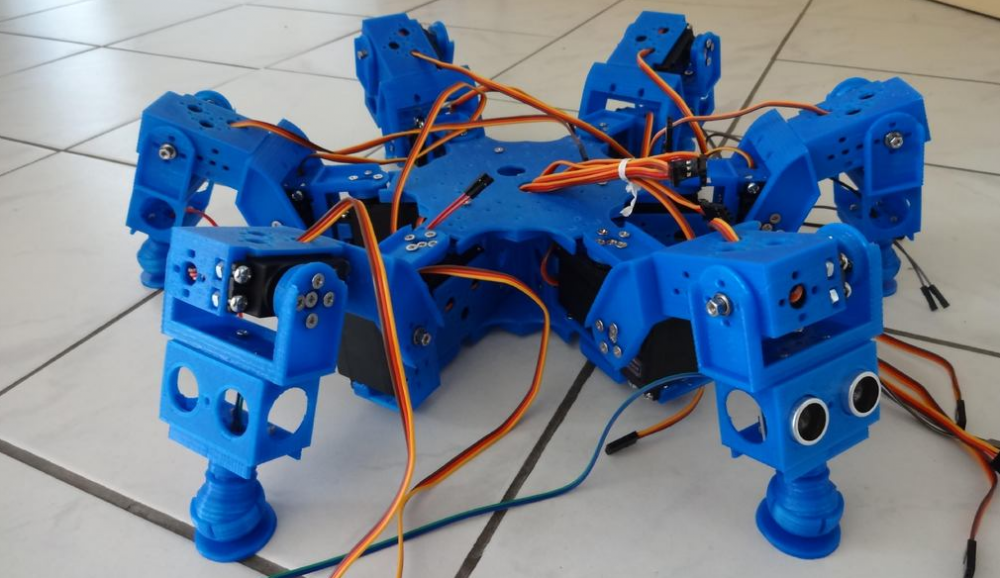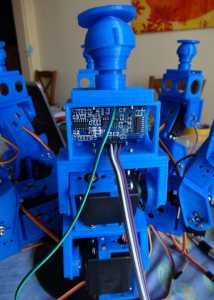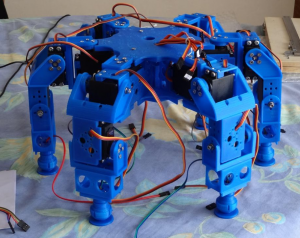 Only a few years ago makers needed to build most of their home projects almost entirely from scratch, which could often become cost prohibitive as well as requiring a very steep learning curve. Robotic and electronics kits were generally rather expensive and often limited in customization and adaptation options, leaving people to simply build someone else’s idea. For new makers who wanted to build something different and new, the options were few and far between.
Only a few years ago makers needed to build most of their home projects almost entirely from scratch, which could often become cost prohibitive as well as requiring a very steep learning curve. Robotic and electronics kits were generally rather expensive and often limited in customization and adaptation options, leaving people to simply build someone else’s idea. For new makers who wanted to build something different and new, the options were few and far between.
But thanks to recently available inexpensive technologies like 3D printers, the Raspberry Pi and of course Arduino it is easier than ever to start exploring home built robotics and electronic devices. These emergent technologies have been adapted for students, home makers and builders with an emphasis on educating and simplifying the creation process. By removing many of the hurdles that prevented people from exploring robotics, an entirely new generation of makers is being born. And by making what used to be difficult to make accessible to almost everyone, they are allowing them to focus on creativity over feasibility.
For Philippe Leca, these new tools inspired him in ways that he never could have predicted. The French welding engineer was coaxed into accompanying a colleague to a welding and connected technologies workshop being held at the Nîmes University of Technology. The workshop introduced him to a wealth of new tools that could be easily adapted by both beginners and veteran makers alike. After getting home from the workshop Leca started looking online at some of the projects that Arduino and 3D printing were being used for and found himself amazed. As it turns out Leca’s primary hobby of astrophotography was beginning to frustrate him as it is dependent on clear nights, which he has found to be in short supply near his home in Paris recently. Having previously built his own telescope, including grinding and polishing his own mirror, he decided to try something else.
“Arduino was just a word for me, but I discovered the power of this tiny electronic board (and system) in term of development and innovation. It has been like an atomic bomb in my head. As I’m not skilled in electronics hardware, I understood that it was possible to program it with such a device. I decided to buy a starter kit (Uno R3 with some chips and sensors, a self-gift for Santa) and I began to learn how to program it and to wire several components to it,” explained Leca.
 After conferring with his daughters he decided to build his own spider-legged robot, which Leca would name “Gilbert” because they asked him to. As of this iteration, Gilbert has evolved through three prototyping phases. The first, Gilbert100, was built using a 2mm thick aluminium plate that he machined at home and controlled using a wired PS2 controller. Gilbert200 traded in his aluminium body for parts from two different Chinese robotics kits that Leca purchased from eBay and some upgraded electronic parts that made him more responsive. Leca also added a Wi-Fi-enabled digital camera to the hexapod.
After conferring with his daughters he decided to build his own spider-legged robot, which Leca would name “Gilbert” because they asked him to. As of this iteration, Gilbert has evolved through three prototyping phases. The first, Gilbert100, was built using a 2mm thick aluminium plate that he machined at home and controlled using a wired PS2 controller. Gilbert200 traded in his aluminium body for parts from two different Chinese robotics kits that Leca purchased from eBay and some upgraded electronic parts that made him more responsive. Leca also added a Wi-Fi-enabled digital camera to the hexapod.
Several months later what you see now is the result of the third prototyping phase. Gilbert300 got a new PLA, 3D printed body, touchscreen controls and inverse-kinematic with range sensors and touchdown sensors that would allow the robot to feel where it is going. Leca designed all of the 3D printed parts using OpenSCAD over a period of about three days. Then he 3D printed all of the parts while he was sleeping or at work over a period of about a month, but final assembly only took him a few days to complete.
Currently Gilbert300 is capable of walking in all directions including single, double or a triple gait with full rotation on the z axis. He can increase or decrease his ground clearance and is also capable of vertically tilting the camera. Additionally Gilbert300 will soon be able to sense when each foot touches the ground, alter his course based on obstacles in his way and self-adjust his ground clearance when walking on unlevel ground.
Subscribe to Our Email Newsletter
Stay up-to-date on all the latest news from the 3D printing industry and receive information and offers from third party vendors.
You May Also Like
3D Printing Unpeeled: New Arkema Material for HP, Saddle and Macro MEMS
A new Arkema material for MJF is said to reduce costs per part by up to 25% and have an 85% reusability ratio. HP 3D HR PA 12 S has been...
3D Printing News Briefs, January 20, 2024: FDM, LPBF, Underwater 3D Printer, Racing, & More
We’re starting off with a process certification in today’s 3D Printing News Briefs, and then moving on to research about solute trapping, laser powder bed fusion, and then moving on...
3D Printing Webinar and Event Roundup: December 3, 2023
We’ve got plenty of events and webinars coming up for you this week! Quickparts is having a Manufacturing Roadshow, America Makes is holding a Member Town Hall, Stratafest makes two...
Formnext 2023 Day Three: Slam Dunk
I’m high—high on trade show. I’ve met numerous new faces and reconnected with old friends, creating an absolutely wonderful atmosphere. The excitement is palpable over several emerging developments. The high...































